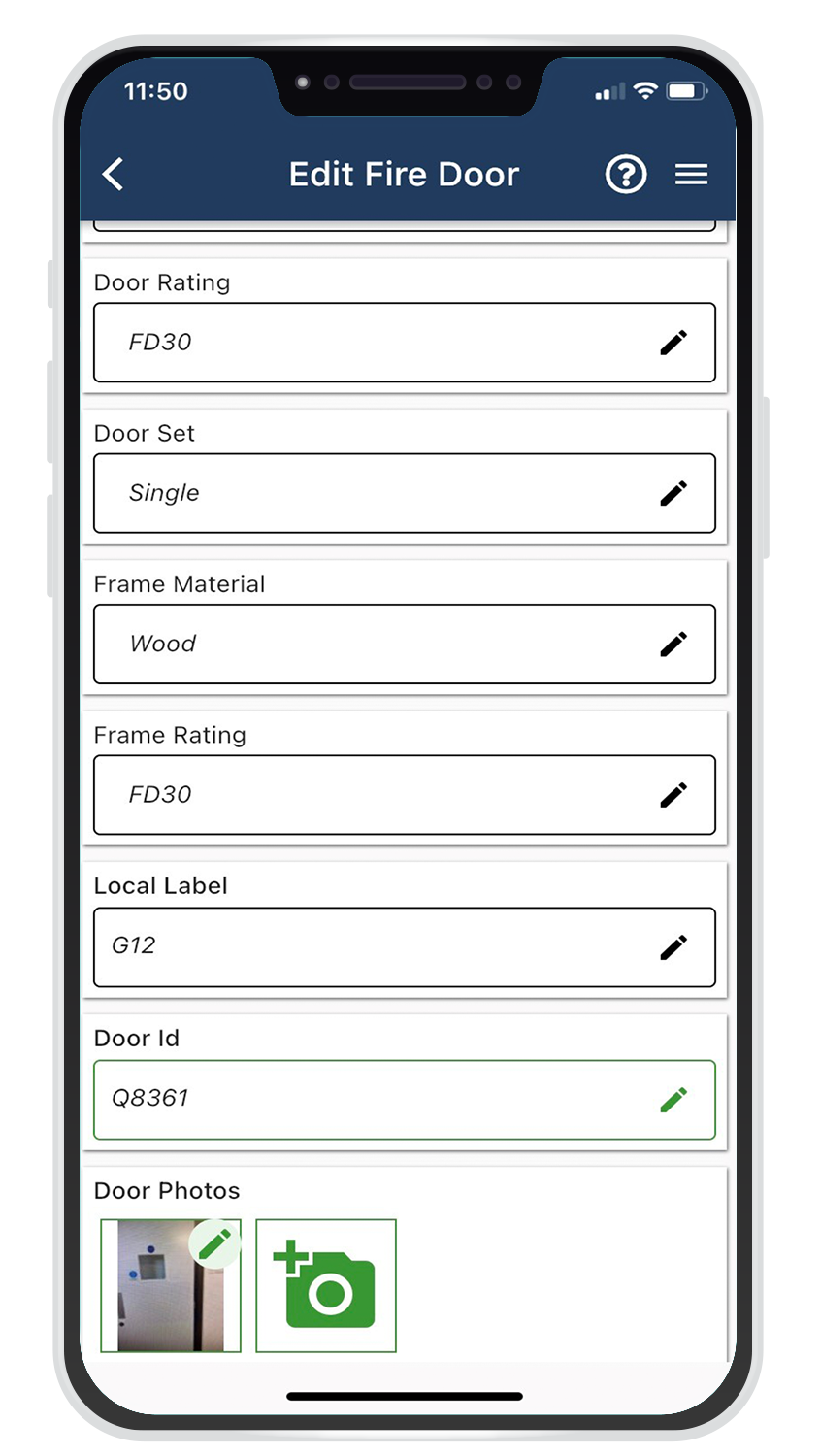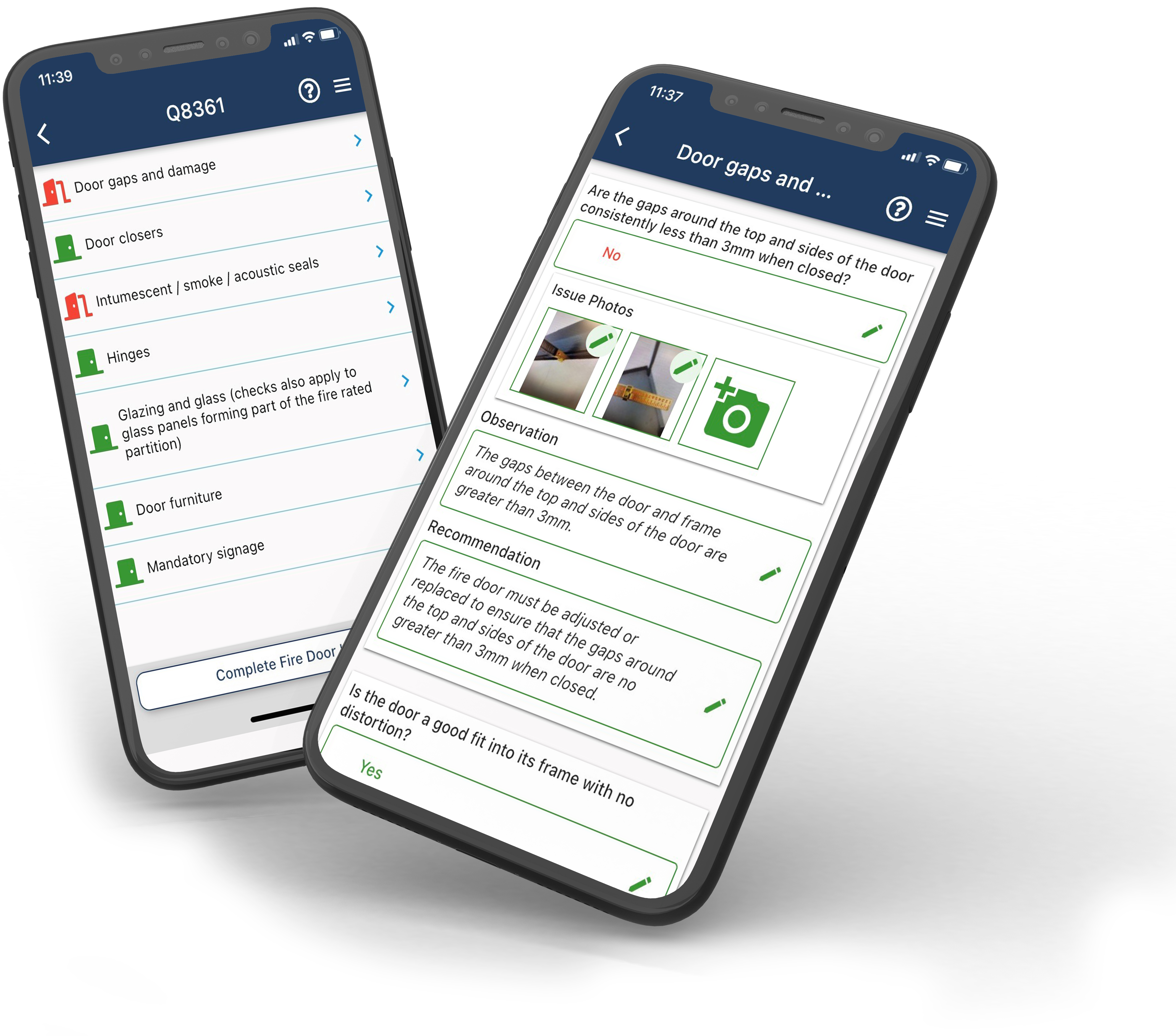Fire Door
Inspection
In order to comply with the Regulatory Reform (Fire Safety) Order 2005, fire door inspection and maintenance is a key requirement for every business and property to which the Order applies.
In the event of a fire, a well-maintained fire door will help, to prevent the spread of fire and smoke between separate compartments of a building and enable occupants to escape safely.
Fire door inspection, process and methodology
All our assessors are fully qualified, competent and professional. They all have minimum of level 3 fire qualification and are all certified fire door inspectors.
All our inspections are completed using the QuidvisRiskApp which ensures they are comprehensive, evidence based and consistent.
Fire Door Inspections are generated automatically and available to view on QuidvisRMS once the inspection is completed on QuidvisRiskApp.
Fire door register
Every fire door is recoded and provided a unique identifier, and the following information is captured:
- Certifire label, if present
- Door material
- Door Rating
- Door Type i.e single, double, roller etc
- Frame material
- Local label, if present
- Photographs of door
Identify risks
A full inspection of each door is carried out covering:
- Door Gaps and Damage
- Door Closures
- Intumescent / smoke and acoustic seals
- Hinges
- Glazing
- Door Furniture
- Signage
Reporting
The reports will be provided on QuidvisRisk portal, the most comprehensive Fire risk and fire door reporting and risk management solution on the market. QuidvisRisk portal, ensures you don’t have to plough through a vast amount of excel spreadsheets or pdf reports to view your fire door reports.
If Quidvis also provides your Fire risk assessments, you will be able to see your fire risk assessments in the same area allowing you to effectively manage your total fire risk.
Estate level reporting
Each property can be seen from the main dashboard showing how many doors they have in total and how many have Passed or Failed inspection.
This allows the responsible person to quickly identify and manage those properties that have the most risks.
Detailed Reports
Drill through to individual doors to view the detailed report showing the areas of failure and the recommendations. Each area of failure will be accompanied by photographic evidence.
All doors that have passed inspection can be viewed to see the general information.
Managing risks
Jobs can be allocated to internal or external suppliers detailing the work you wish carried out, budgets and timescales.
When work is completed, the responsible person can resolve the risk, showing a complete audit trail of the work carried out, who carried it out and costs.
Doors that pass inspection:
The responsible person will be able to see details of all doors inspected including those that passed inspection. All doors that pass inspection will detail the general information including the fire rating and up to 3 identifying pictures.
PDF Reports
All reports are available in a dynamic pdf which can be downloaded from QuidvisRisk portal.
We do not manufacture or install fire doors, so we are an independent solution. However, we can recommend accredited and approved companies to fit any replacement Fire Doors required on site.
How often should you have a fire door inspection?
It is statutory requirement that a full inspection and survey is carried out on your fire doors to ensure compliance. Depending on the type of building you are responsible for and who occupies it, will influence the frequency of fire door inspections required.
Some buildings, such as schools and hospitals, are subject to heavy traffic and the doors have a hard time often being subject to repeated misuse. BS9999 recommends six monthly inspections for fire doors in constant use and includes guidance on some of the main inspection criteria.
It is the responsible person within the business or organisation that is responsible for ensuring an adequate inspections and maintenance routine is in place.


